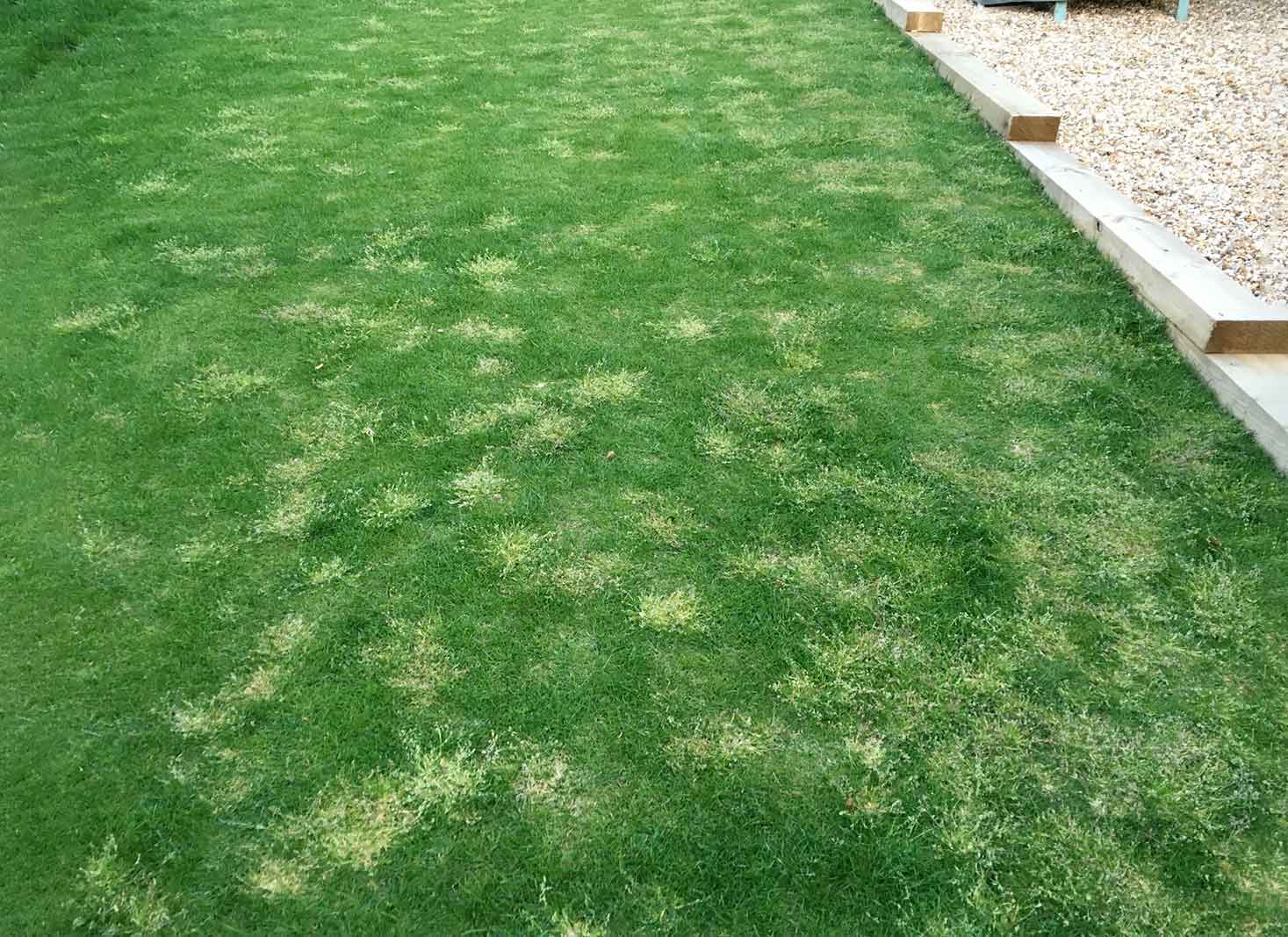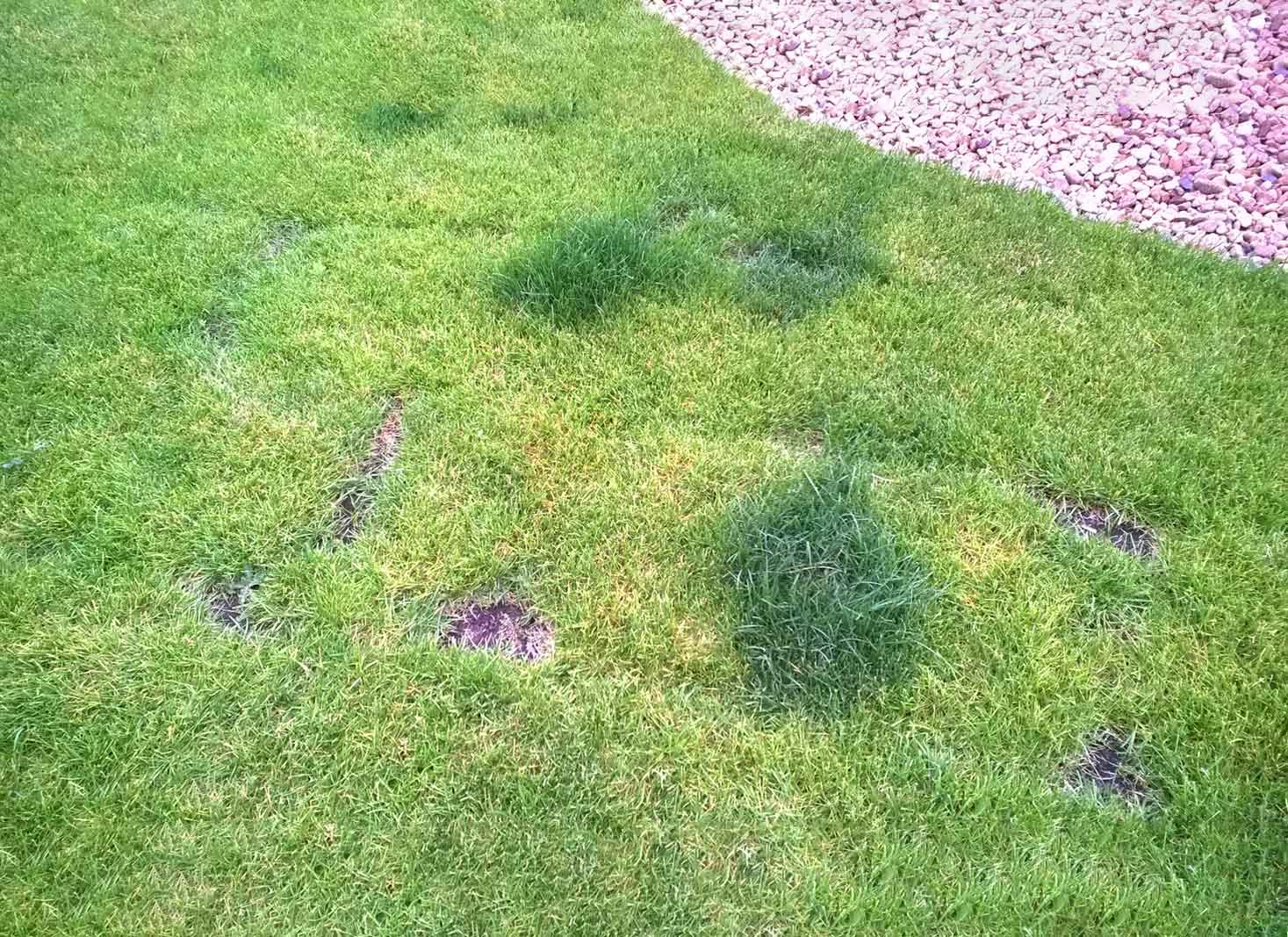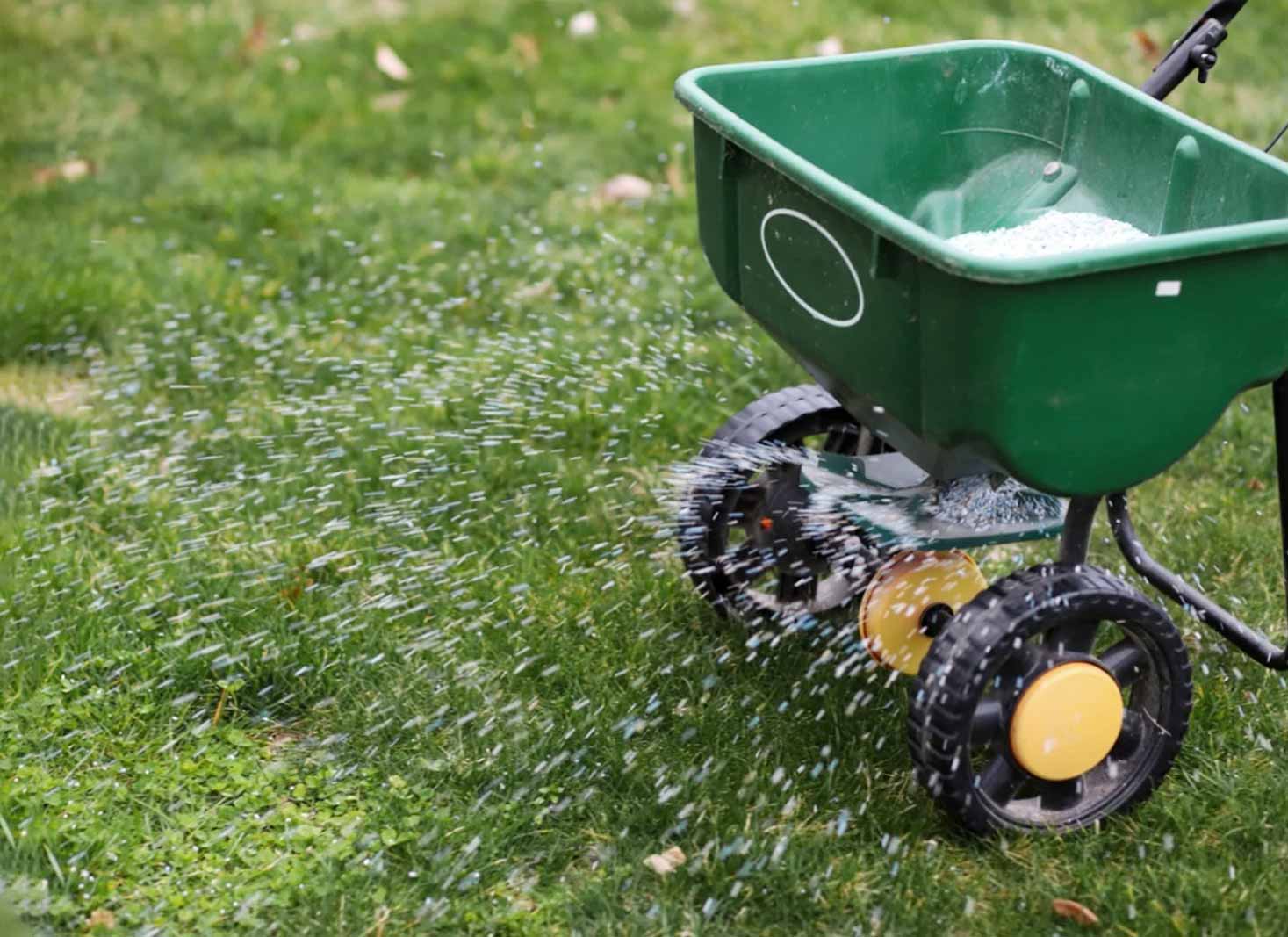
Have you ever wondered what causes those mysterious light green patches in your otherwise healthy, dark green lawn?
Identifying light green grass patches involves being observant and considering seasonal changes. These patches can be an indication of nutrient imbalances, soil issues, pest problems and inadequate sunlight.
Effective solutions involve fertilization techniques, soil improvement and pest control measures, as well as regular lawn maintenance to prevent future occurrences.
What we cover
ToggleIdentifying Light Green Grass Patches on Your Lawn
Before diving into the causes and solutions of light green grass patches, it’s essential to understand how to identify them.
A keen eye for visual differences, an awareness of common locations, and a consideration of seasonal variations will help you pinpoint the root of the problem.
Visual Differences
The appropriate amount of sunlight is crucial for the growth of green grass, as it aids in chlorophyll production.
Insufficient sunlight can lead to light green patches, whereas too much sunlight can cause your lawn to appear burnt and brown.
Observing the color variations in your lawn will help you determine if sunlight is a contributing factor to the light green patches.
Common Locations
Light green grass patches can be attributed to a variety of factors, including nutrient deficiencies, inadequate sunlight, insufficient hydration, different grass types, or grassy weeds like foxtail or crabgrass.
They may also be linked to drainage or irrigation issues, such as an inefficient sprinkler system. Pet urine, high in nitrogen, can also cause light green patches.
Seasonal Variations
Nutrient deficiencies such as nitrogen, phosphorus, and potassium can result in the yellowing of grass and reduced vigor during different seasons. Iron deficiency is also commonly observed in alkaline soils.
During the dry season, insufficient hydration may cause light green grass patches.
Therefore, it is crucial to consider seasonal variations when identifying light green patches in your lawn, as the causes and solutions may differ depending on the time of year.
Common Causes of Light Green Grass Patches

Nutrient Imbalances
Nutrient imbalances occur when the soil lacks the necessary nutrients for the grass to grow optimally, leading to light green patches in a lawn. A deficiency in nutrients, particularly nitrogen, can cause the grass to lose its green color.
The presence of dog urine, which is high in nitrogen, can also cause discoloration of the grass.
To determine if your soil has nutrient or pH imbalances, inexpensive test kits can be used to inspect the common nutrients and pH levels of your soil.
Additionally, a thick thatch buildup can obstruct the delivery of water and nutrients to the grassroots, resulting in light green or yellow patches in the lawn.
Soil Issues
Soil issues such as drought stress, turf disease, nutrient deficiency, improper mowing, or inadequate light conditions can result in light green grass patches.
Soil compaction is another factor that can cause these patches, as it makes it difficult for roots to grow and absorb nutrients.
To address soil issues, consider improving soil conditions by incorporating organic matter, such as grass clippings, leaves, or compost.
This enhances the soil’s ability to store and supply essential nutrients, improves soil structure, and increases water retention.
Pest Problems
Pests such as fungus, mold, mildew and parasites can damage grass blades. This can result in a lighter color. Bugs like webworms and thrips also cause light green grass patches.
Fairy rings, a fungal growth that consumes buried organic matter and impedes water flow to the grass’s roots, can cause the grass to dry out and die.
To address pest problems, consider treating your lawn with an organic insecticide or fungicide.
Once the pest issue is resolved, ensure proper lawn care practices are in place, such as aeration and regular watering, to prevent future occurrences of light green grass patches.
Effective Solutions for Light Green Grass Patches

You can restore your lawn’s vibrant green hue and maintain a healthy, thriving landscape by implementing fertilization techniques, improving soil conditions, and employing pest control measures.
Fertilization Techniques
Fertilizing your lawn is a crucial step in addressing light green grass patches. Organic, high-quality lawn fertilizer can be beneficial to your grass. Choosing a fertilizer tailored to your particular type of grass is important.
Nutrient deficiencies can be one of the reasons for a grass having a lack of color. A good quality, organic fertilizer can provide the necessary nutrients to restore the grass’s color.
Should the source of the patches be overly dry soil, consistently watering the affected area for a few weeks can help restore the grass’s health.
Improving Soil Conditions
Incorporating organic matter, such as grass clippings, leaves, or compost, can improve soil conditions by increasing the soil’s ability to store and supply essential nutrients, improving soil structure, and augmenting water retention.
Aerate your lawn to alleviate soil compaction and improve water and nutrient penetration to the grassroots.
Additionally, addressing drainage issues and ensuring proper water flow can help prevent the formation of light green patches due to standing water.
Pest Control Measures
Implementing pest control measures is essential for addressing light green grass patches caused by pests.
Treating your lawn with an organic insecticide is an effective solution for insect infestations. When choosing an insecticide, consider the safety of children, animals, and the lawn itself.
For fairy rings, use a fungicide like Brandt Consan 20 to eliminate the fungal growth. Once the fairy rings are removed, aerate the area and ensure regular watering until the lawn regains its natural green hue.
Additionally, avoid leaving clippings behind when mowing the lawn to prevent the recurrence of fairy rings.
Lawn Care Tips to Prevent Light Green Patches

Prevention is always better than cure, and that holds true for light green grass patches as well.
By implementing mowing strategies, proper watering practices, and regular lawn maintenance, you can prevent these unsightly patches and maintain a lush, green lawn all year round.
Mowing strategies should be tailored to the type of grass you have, as well as the climate and season. For example, cool-season grasses should be mowed higher in the ground.
Mowing Strategies
Avoid mowing wet grass, as this can cause the grass to clump and block sunlight, leading to uneven coloration. Mow grass at a height of 2 inches (5 cm) or higher to promote healthy growth and prevent scalping.
Allow grass to grow to 3 inches (7,6 cm) or longer before mowing to ensure a healthy root system and prevent light green patches.
During the dry season, avoid mowing the lawn too short, as this can cause additional stress to the grass and contribute to light green patches.
Watering Practices
Water your lawn deeply once or twice a week, preferably in the early morning (between 4-8 a.m.), and no more than once a week. This promotes the growth of deep and strong roots, preventing light green grass patches.
Using a moisture meter can help assess whether your lawn is receiving sufficient hydration.
Avoid overwatering, as this can lead to root rot and other issues that contribute to light green patches. On the other hand, insufficient watering can cause your lawn to appear dry and dull.
Regular Lawn Maintenance
Remove thatch buildup to ensure water and nutrients can reach the grass roots. Ensure adequate nutrient levels by fertilizing your lawn properly and at the appropriate time.
To prevent light green grass patches caused by pet urine, restrict your pet’s access to visible parts of the lawn and designate a specific area for them to relieve themselves.
When to Seek Professional Help

Sometimes, despite your best efforts, light green grass patches may persist or appear on a large scale. In such cases, it’s advisable to seek professional help.
A lawn care professional can properly diagnose the issue and provide targeted solutions to restore your lawn’s health.
Persistent Patches
Persistent light green patches may indicate more serious issues, such as nutrient deficiencies or diseases, that require the expertise of a professional.
A lawn care professional can identify the root cause and provide the necessary treatments to address the problem.
Don’t hesitate to seek professional help if your efforts to resolve the issue have been unsuccessful. A healthy, vibrant lawn is worth the investment.
Large-Scale Issues
Large-scale light green grass patches can be overwhelming and may require professional intervention.
A lawn care professional can evaluate the situation and implement appropriate solutions, such as specialized fertilization techniques, soil amendments, or pest control measures.
Reaching out to your local agricultural extension office can also provide guidance on specific lawn grass diseases in your region and recommend suitable professionals to assist you.
FAQ's
It is likely that your grass is lighter in some spots because of nutrient deficiencies or drainage issues.
With adequate levels of nitrogen, phosphorus, and potassium, your lawn will be able to thrive, and good drainage can prevent oxygen and essential nutrients from reaching the roots.
Additionally, grassy weeds like foxtail and crabgrass may be competing with your lawn, reducing its health and causing lighter patches.
Light green grass clumps are most likely crabgrass. A common weed, crabgrass is known to grow in thin or bare areas of the lawn.
People should be informed that crabgrass can be controlled without using pre-emergent weed control.
It is likely that your lawn has different shades of green due to uneven fertilizing, watering, or mowing. To help out the green, it is best to ensure you provide adequate and consistent care to your grass.
This includes mowing regularly at a height that is suitable for the type of grass you have, using the right fertilizer in accordance with its needs, and ensuring even and regular watering.
To achieve the best results, it is important to follow the instructions on the fertilizer packaging and to water your lawn deeply and infrequently. Additionally, it is important to mow your lawn at the right time.
The grass color differences are likely due to improper fertilization. Unbalanced application of fertilizer or an incorrect blend may cause some spots of grass to appear darker in color than others.
Since proper fertilization is key to getting and maintaining a lush, green lawn, it’s important to ensure that it is applied correctly and regularly.
The shade of green your grass displays is an indication of its health. Light green lawns are healthy, vibrant lawns that don’t need to be watered as frequently as those with a deep green hue.
Therefore, if you see light green grass in your yard, it’s important to ensure that your lawn has the adequate amount of hydration.
